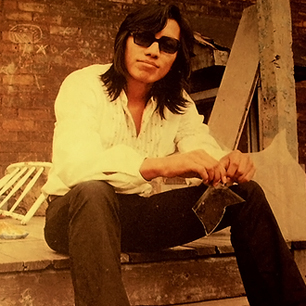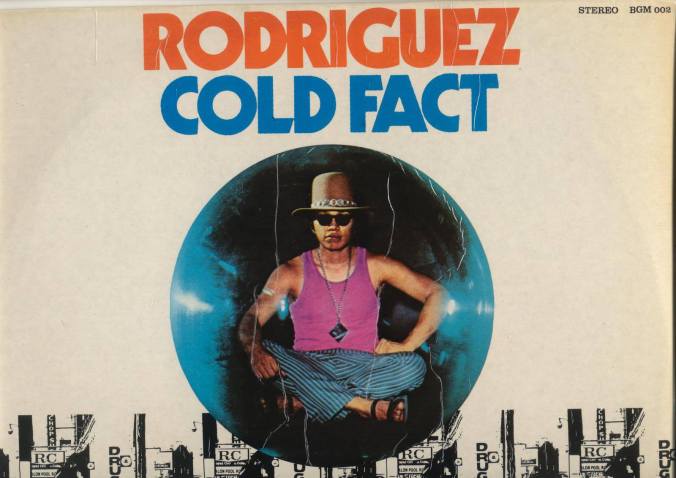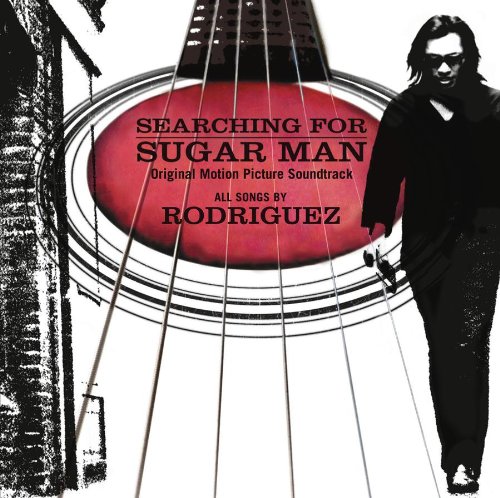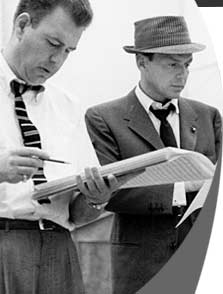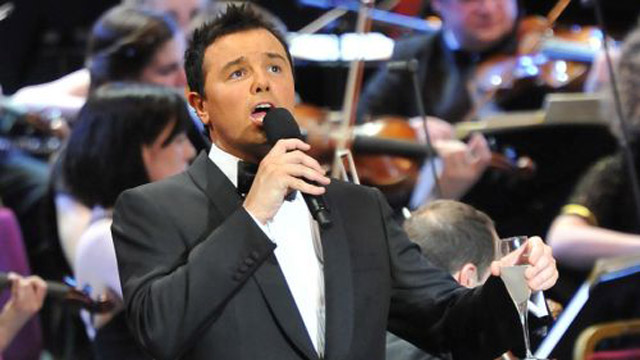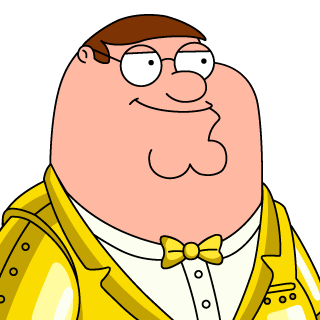A year ago, in the early stages of this blog, I described my experiences at “John Williams Film Night” at Tanglewood. That’s always one of the most popular events of the season and I hadn’t really planned it out. Jenny and I went sort of at the last minute, and by that time, seats in the Shed had long been sold out. So, we lawned it…and well, last year’s blog pretty much told my thoughts on the whole experience. Let it suffice to say that, back on January 24th, at 10 am, when individual Tanglewood tickets went on sale, I made sure I was on-line. If I was going to go to “John Williams Film Night” again, I wanted in the Shed. Being so far from the musicians…well, you can read last year’s blog, if you’re that interested.
There are many things I love about living in Western Massachusetts…though I will confess, with this recent spate of hot, humid weather, that love is being somewhat tried. But be that as it may, our proximity to Tanglewood is really a treat. It took us just about one hour and 45 minutes to get from our driveway in Amherst to walking out of the car and up to the main grounds. Though we weren’t sitting on the lawn this time, we still brought our picnic regalia. Kudos to the intrepid Jennifer, who bought an ingenious device that included a cooler, plenty of storage, and even its own set of plasticware. Best yet, it easily fit underneath our seats in the Shed! It was around 6 when we arrived, and the grounds had been open for about 30 minutes. The lawn was already filling up but since we weren’t in need of being near the Shed, we found some shade off to the side (really needed on such a warm, sticky evening); opened our bottle of wine; brought out the chicken, cheese and potato salad; and pre-gamed the Boston Pops. Err…pre-concerted, I guess is the correct verbiage.
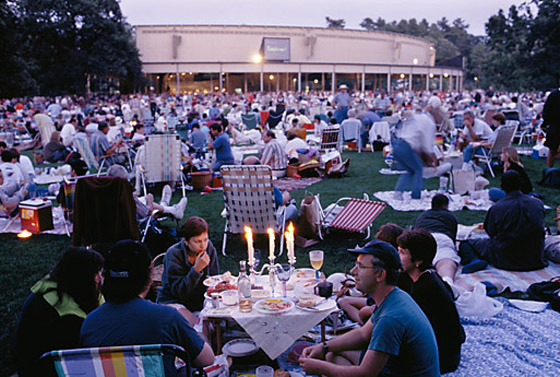
Tanglewood, Lenox, MA
When concert time drew near, we made our way to the Shed. The lawn crowd was stretching farther and farther back. At this point, I must confess, when I bought our Shed tickets on the first day, even in the first hour they were on sale, we weren’t near the stage I suspect BSO season ticket holders get first dibs (which is absolutely fair; they’ve consistently supported the organization) and then they are open to the general public. So, I thought we might be in the very back corner of the Shed. Good enough to technically be inside, but really on the periphery. If the stage is Earth, then maybe our seats where the stratosphere. But to my surprise, our seats were actually very good. They were on the end of an aisle, close enough that you could easily see the stage and the musicians upon it, but also about two rows back of one of the screens, on which the concert was projected. I wouldn’t go so far as to say, it couldn’t have been better…but it was still quite good. And it was so much better than last year’s Lawn experience. Last year, I thought it might as well have been listening to the show on a radio. Last night, I felt the connection. I was there. I could see the musicians at work. I could see the music being generated. And more importantly, particularly on the first half, I could see the joy on the conductor’s face. And of course, I was also keen to watch how the conductor approached his craft. You see, music is a communal experience. The musicians make it, and the audience receives it. A community is made.

The conductor for the first half was Richard Kaufman, who, according to his biography, has had a background in movie music industry. He was a very clear conductor, and had a warm, gregarious stage presence. Maestro Kaufman made jokes about the humid weather, which were well received, and seemed genuinely humbled and appreciative to be standing in front of the Boston Pops, at a sold-out Tanglewood. In between numbers, he shared vignettes from his career, from being an violin student at the Tanglewood Music Center, to playing on some of the John Williams recording sessions in the 1970s.
The concert began appropriately with John Williams’ “pull out all the stops” arrangement of Hooray for Hollywood. As I’ve written before, I have a thing for arrangers. When I hear a big band, even one with the greatest of players, it’s the writing that catches my attention. If I might deviate for a brief second (I promise) Saturday morning I attended a wedding of two former students. It was a joyous affair and the reception had a touch of class to it with an actual swing band in the house. They were a great group, featuring a few former students and even a colleague of mine behind the ivories. But as great as the musicians were, it was the book that caught my attention. It’s why I admire Glenn Miller so much more than any of the other swing band heroes; he was an arranger more than a trombonist. And Billy May….my absolute musical idol. So while John Williams is always going to be known for those sweeping movie themes (and justifiably so), I had a ball listening to his witty paean to the bygone glory of Tinseltown. If you’re not familiar with the Williams arrangement of Hooray for Hollywood, well, just click here! I always love when writers reference other works, and the appearance of those two great entertainment anthems, There’s No Business Like Show Business and That’s Entertainment…well, it shows that if John Williams had been born 20 years earlier, there’s no doubt he’d have fit right in with the Freed Unit over at MGM, whipping out the grandest musical entertainments Hollywood to this day has ever created.
But John Williams Night with the Pops was not a tribute to the technicolor heyday of MGM. The first half was almost all John Williams, but not entirely. The theme was “Up, Up and Away: the Movies Take Flight!” which allowed for some great presentation options. Flight to Neverland from Hook was accompanied by a terrific video montage of aeronautics in the movies. This covered the entire gamut, with clips ranging from Wings (the very first Oscar-winner, way back in 1927) to Top Gun. Super Man, X-wing fighters, the Starship Enterprise, Mr. Fredrickson’s house and Russell with the leaf-blower from Up, Peter Pan (both the Disney cartoon and Robin Williams), Wall-E, and Leonard DiCaprio playing Howard Hughes all dashed across the screen. I couldn’t contain my enthusiasm with the copious amounts of World War I aircraft on display. Now granted…I pretty much label any biplane a World War I device. Never mind that the biplane I flew in came over 20 years after the Armistice. But seeing those beautiful crafts, be they with the red, white and blue of the Entente or the Iron Cross of Germany, execute such gymnastics that would put Simone Biles to shame, accompanied by John Williams’ gorgeous music? I might have died right there and been happy. The fact that David Niven and Cantinflas, ballooning over the Alps from Around the World in 80 Days made it into the show….well, that was just the cherry on the top!
I have to say, the use of multimedia with these concerts so enhances the experience. It was the case throughout the concert. Conductor Kaufman joked that a tribute was to be made to the greatest of all cinematic pilots, for which the Pops played the rousing march from The Great Waldo Pepper. But rather than Robert Redford, we saw Snoopy from The Peanuts Movie, giving battle to Manfred von Richthofen, in that glorious scarlet Fokker triplane of his (Aaaaah!). In the second half, one of John Williams’ Olympic themes was accompanied by scenes ranging from Michael Phelps (who received quite the applause) to LeBron James playing from Team USA. Similarly, the music from The Force Awakens had entire video that matched the music with the action. Now…I know you can’t do this with the average orchestral concert. For crying out loud, what kind of video could you even put to go alongside Mahler 3? Each piece the Pops played was only about 4 – 6 minutes long, the perfect length for accompanying images. But even I, who have three music degrees, found myself completely taken by the images. It wasn’t that I stopped paying attention to the music; but rather, I found the entire experience enhanced with the images. It’s something I might have to think about exploring in some context with my own concerts.
I don’t know if Maestro Kaufman selected the repertoire for the first half of the concert or it was prepared for him, but it certainly didn’t lack for fireworks. Adventures on Earth from E.T.; both the love theme and that incredibly stirring title from Superman (during which, I must confess, I probably made Jennifer more than a little embarrassed. I just can’t sit still near the beginning, when the music starts picking up, the tempo builds, and then there’s that brass fanfare. BAM! It’s said that on the recording session for the movie, director Richard Donner ran screaming into the hall, proclaiming “That’s it! That’s it!”); and a unique, very tuneful selection, Ireland, from Franz Waxman’s score to The Spirit of St. Louis. This was the telling of Charles Lindbergh’s flight across the Atlantic, and Waxman’s music evokes the soft strains of traditional Irish music emerging out of the haze, just as Lindbergh would have first seen the land. I hadn’t seen the movie but the music was really enjoyable, and kudos to Maestro Kaufman on giving it a new lease on life. For those as unfamiliar with it as me, give a listen. It definitely deserves better than obscurity!
But as exciting as all this was, the highlight of the first half for me was something completely different. When we think John Barry, if you know who he is, the first thing that comes to mind is James Bond. There’s a good reason for that. He was the composer for much of the classic Bond. Though he didn’t compose the James Bond theme, he sure knew how to make the most of it. But you talk the classic Sean Connery films, you’re talking John Barry. And is there any theme bigger, bolder, brassier, and more awesome than this one? But here’s the thing about John Barry. As incredible as Goldfinger is…and it’s incredible…there may be no one in Hollywood history who could write a big, lush, sweeping Romantic theme like Barry. Yes, I hear you, Maurice Jarre Lawrence of Arabia partisans. It’s hard to argue with that. But what about that famed John Dunbar Theme from Dances with Wolves? It just grabs your heart strings (no pun intended, since it’s so richly string-scored). The openness of the West, the opening of John Dunbar’s mind, and the melancholy of what is happening to the people he has befriended. Listen and tell me you’re not moved. Even with James Bond, Barry could still give us the sweeping, aching theme. Take my favorite of the Roger Moore films, Octopussy. Forget the Rita Coolidge vocal main theme; listen to it as it appears in the background of the love scene. That’s Barry at his finest. So rich, so deep…so gorgeous.

And so, the highlight of the first half was not John Williams but, keeping with the idea of flight, John Barry’s Oscar-Winning theme to Out of Africa. In this case, let me show you the scene itself. Meryl Streep as Karen Blixen and Robert Redford as Denys Fitch-Hatton, in the early 1920s, flying over the Africa countryside in a gorgeous biplane (aren’t they beautiful contraptions? Oh, I could rhapsodize about the biplane. So small against the terrain; flies so low that it’s always part of the scenery, not above it; capable of such wonderful maneuvers…but I digress). Barry’s strings soar with that beautiful plane, and the horns….oh, those French horns! When the Pops played this, I couldn’t hold back my emotions. If I was on the edge of my seat for Superman, then Out of Africa found me clutching my heart, swaying back and forth. Such beauty. Maybe I’m a simpleton, and maybe, with my music degrees I shouldn’t be saying this…but those sweeping John Barry themes…I’ll take those over so many of the concert hall “masters.” I’m not trying to disparage our greats. But of those, not many move me like John Barry at his sentimental best. Maybe I’m just a sucker for a big tune. But let’s give Barry his due. Yes, he could write something completely in your face like Goldfinger and do it exceptionally well. And let’s also not forget, he is credited, alongside Duran Duran as the co-author of A View to a Kill. In fact, if you haven’t seen this video before, it’s worth your time. After Barry passed, Duran Duran paid tribute to him at a performance at Coachella, with a Bond/Barry medley before hitting their famed collaboration. But for all those big moments, it’s Barry the sentimentalist, Barry the author of the gut-wrenching, heart-tugging, vibrato-loving string theme that gets to me. You talk the great Hollywood composers and of course there’s John Williams. Bernard Herrmann will be right there. Milks Rozsa of Ben-Hur fame. Nino Rota for The Godfather. Ennio Morricone for those spaghetti Westerns. So many more. John Barry may not be the first name to come to mind, and that’s a shame. He did a variety of styles and did them well…but that big, soaring string theme…that was his bread and butter and what I love the most. And before I close the book on Maestro Barry, here’s one more. I dare you to get that cascading string motif out of your head. Just genius!

But Richard Kaufman, flying medleys, and even the brilliance of John Barry were just the warm-up to The Man himself. Before that, though, I need to jump back to Out of Africa. As I mentioned, those incomparable Barry string lines were accompanied by French horns that literally took flight. Richard Sebring is the principle horn for the Pops and he had a night worthy of LeBron in the NBA Finals. The John Williams music is not easy, particularly for the horns. As was demonstrated in the second half, pieces like the Princess Leia theme from A New Hope and Luke and Leia from Return of the Jedi demand much from the solo horn. It’s a major melodic voice, and often is just left out their to dry. If the soloist misses a note, even by a fraction, it’s noticeable…particularly since everyone knows those Star Wars themes. And it was this way throughout the entire concert. On a standard orchestral concert, a player like that might have a couple exposed passages (the horn solo in the second movement of Tchaikovsky’s Fifth Symphony, for example). But at Tanglewood, it was one feature after another. Major kudos goes to Maestro Sebring. He must have ice in his veins, for he never, for a fraction of a second, faltered.
In fact, last Saturday night’s concert was so memorable, the excitement continued at intermission! No sooner had Maestro Kaufman left the stage than did a Tanglewood official grab the microphone and announce that severe weather was on the way and that anyone on the lawn needed to take cover. May I remind how last year’ experience (when weather was perfect!) motivated me to buy early to get into the Shed? That decision was motivated simply by a desire to be in communion with the musicians. But the ability to have a seat and be settled, while hundreds of others scattered with their belongings for a dry space….well, I’ll call that an added bonus! I should add, this wasn’t just rain. It was rain that was coming down sideways. It was the mighty trees on the Tanglewood lawn being blow this way and that. It was the screens inside the Shed being rolled up, due to them swaying back and forth at an increasingly alarming rate. And most notable of all, this intermission entertainment was bolts of light racing from the sky to the ground. This continued on for well over 30 minutes, might have been over 45. And yes, I did feel sympathy for our Lawn patron brethren. I still was justified in my early January purchase but my smugness did have a sympathetic edge. As the delay continued, I wondered if there’d be a second half. I don’t know much about Musician Union contracts, but as the concert stretched later into the night, would they run out of hours, like a pilot or a railroad engineer? What about Maestro Williams? Would he say, “That’s it, it’s too late. My contract said I’d be done by 10. I don’t give a downbeat at 10:30.” I don’t think I was alone in that fear, as I do believe some patrons decided to take their chances and make it back home. If they were on the lawn, I wouldn’t blame them. The lawn chairs, towels, blankets….all may have been a damp mess. Ahh…the glory of the Shed seating.
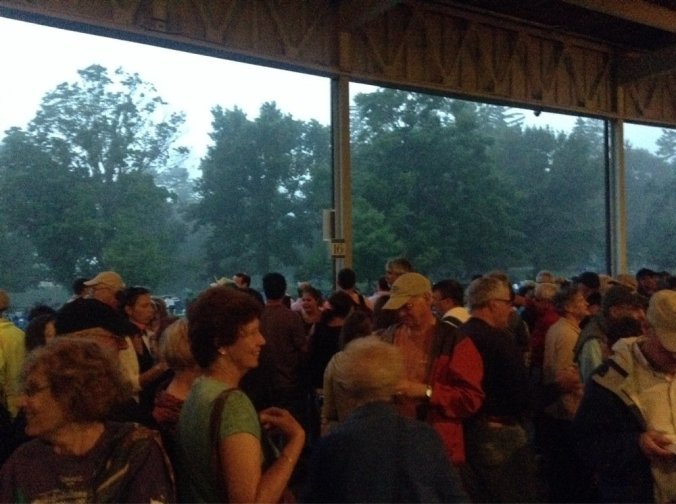
But a glimmer of hope was on the stage. If the second half was to be cancelled, then not all of the musicians had gotten the message. Mind you, it wasn’t the full Pops, but there were some of the players, hanging around the stage, in their chairs. Granted, they were trombones, and you know how much trombonists love to play their horns. There were others too; perhaps this concert was still a “go?” And then, the official took the microphone, said they had gotten the “all clear” and John Williams was warming up in the bullpen. And yes, those were his words. This is what he said. This is what that Tanglewood official said. (Bonus points if you knew that is in reference to). It was now a matter of minutes.
At this point, I must reveal that last year’s “John Williams Night” was absent the titular figure. His health wasn’t the best, and Keith Lockhart stood in for the Master. At Williams’ age (84 now, 83 then), the mention of illness is not something you take lightly. But then, this past December, The Force Awakens descended upon us all, and there was no doubt, John Williams was still at it. His themes for the new characters of Rey and Kylo Ren attest the genius is still there. I conducted a band arrangement of the music with both the Lions Club All-State Band and the Amherst Community Band, and enjoyed every moment. From the grandeur of that main theme to the classic Williams action depicting the X-Wings in battle to that mystical Force theme, as Rey finally meets Luke Skywalker (sorry…spoiler?), The Force Awakens music showed that John Williams is still doing it, no matter when his date of birth is.
So, when the door opened and Williams walked out…well…it was something special. The audience immediately rose to their feet, and why shouldn’t they? The man who gave a sound to the approach of a shark. The man who came up with a musical language with which to communicate with aliens. The man whose music tells Indiana Jones which way to go, whose music gives honor to the victims of the Holocaust and tribute to those who died fighting for America in the Second World War. I could go on, but you get the point. One person wrote all that, and now there he was, walking on stage in front of me. I once went to the same church as President George W. Bush. Seeing him in person was unfathomable; as he walked down the aisle, we made eye contact and I believe he said”Hello”, “How you doing” or something similar. It doesn’t matter what he said, because I couldn’t respond. I had gone speechless. I mean, there’s the President. You hear about him, you see him on tv, but you never realize he’s a real person till you actually see him in person. It’s like when I went to Abraham Lincoln’s tomb in Springfield, IL. You see the crypt, and that’s when it hits you. Abraham Lincoln was a real person. His body is in there. He wasn’t a myth, wasn’t a story; he actually walked on this Earth. It’s all true. And that’s what it felt like Saturday night when the older gentleman in the white tux coat walked on stage. The composer of some of the most memorable movie music in history….he was a legend, he actually exists!

A few blogs ago, I wrote about how very clear and concise Keith Lockhart is as a conductor. He’s not flashy, but extremely functional. You always can tell what Lockhart wants. Williams seemed even more basic. Now granted, he’s 84, and I don’t know how much rehearsal time he had with the Pops. Lockhart is with them all the time. Williams’ conducting was mainly cuing; it wasn’t flashy, but then again, I believe the ultimate test of a conductor’s efficacy is the sound that is produced. And if the way the Pops played Saturday night is any indication, John Williams is the best conductor around! But more than the conducting was his manner. To the delight of everyone, he frequently spoke between selections, and in doing so, we got a back-stage pass into his world. We learned of how he wanted to do the new Star Wars films specifically because he was taken by the character of Rey. He praised Daisy Ridley and found both the character and the actress the inspiration for a very unusual, new theme. He told us how director J.J. Abrams and producer Kathy Kennedy put together a sequence of clips from The Force Awakens just for the concert. We learned how he’s about to start scoring Episode 8, which got more than a little applause. And we learned how he made the original Princess Leia theme passionate, having no knowledge that Leia and Luke were actually brother and sister. Apparently, George Lucas kept that one rather close to the vest!
So what did we hear? I already mentioned the Olympics music, accompanied by the video montage. There was all the medley from The Force Awakens, also with video. So good is Rey’s Theme, that it was programmed later, as a stand-alone. The virtuosity of the Pops showed on the music that accompanies the chase of the Millennium Falcon threw the Asteroid Field from The Empire Strikes Back. From brassy fanfares to dazzling techniques, that’s one not for the faint of heart! And of course, would the concert have been complete without The Imperial March? I ask you, is there a better villain theme in the history of the cinema? I can’t think of one. Instantly identifiable, rhythmic, tuneful; there’s no surprise that so many college marching bands play it in the football stands. I’m still thinking on that one…great villain theme music. Nope, I got nothing.
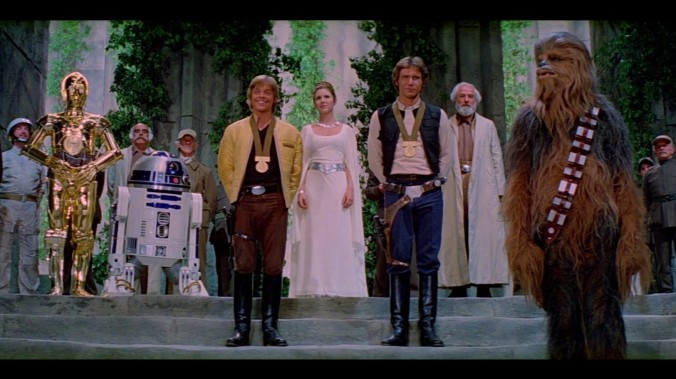
The concert ended just as it did last year, with the Throne Room and Finale from A New Hope. There’s no complaints here, though. This time, the composer himself was on the podium. Williams introduced it by complimenting Harrison Ford’s performance in The Force Awakens, and describing the accompanying video we were about to see. He prepared us, who after The Force Awakens, may have forgotten how young Mark Hamill, Carrie Fisher and Ford were in 1977. The music was spectacular, as you probably already know, and even if it included a reprise of the Princess Leia theme, no one was going to complain. The video montage began with that famous scene from the end of A New Hope and went on from there. Lando Calrissian, Boba-Fett, the Second Death Star, Mace Windu, Padme Amidala, and Anakin all made appearances, as did so much more I’m forgetting. How can you beat that? Maybe the grandest music Williams ever wrote for Star Wars, combined with the images from throughout the saga….let it suffice to say that when the brass played that majestic final quotation of the Throne Room theme, you didn’t have to wait to the last note. Everyone was on their feet, ready to give the Pops and our hero an applause worthy of a Galactic Empire!
When I saw Seth MacFarlane with the Pops in July (a very enjoyable concert as well), he sang one encore and then was on his way. That was a concert that seemed timed to the minute. McFarlane was going to sing for a set amount of time, he’d done one extra, and that’s it. With Williams, it felt different. The applause was thunderous….and he didn’t let anyone down. It was well 11 pm at this point, the concert having started at 8 pm and having an extended intermission. Not did he come back out, not only did he perform two (not one but two) encores, he spoke about them, letting us know more about how they came about. The first was the intensely lyrical Luke and Leia theme from Return of the Jedi, on which Richard Sebring, who had been playing more than a few notes for hours now, continued to shine on the French Horn. For the second encore, we finally stepped outside of Star Wars, with a little bit of Harry Potter. There were, of course, no complaints. And just like hornist Sebring, the celesta player had no margin for error. But since this was the Boston Pops and these are the best of the best, it was played flawlessly. Williams and company earned another well deserved standing ovation, and at this point, no one could have asked for anything more (apologies, Gershwins). What more was there to give us? It didn’t matter if your ticket was on the lawn (assuming you were still there), or you had the best sat in the Shed; you got more value in terms of entertainment than what you paid for.
“John Williams Night” was the best concert I’ve ever been to. The Pops played impeccably. The music is so wonderful. The coordination with the videos and music enhanced the experience. And a living legend was there. I know, as someone with three music degrees, I should say that Mahler, Beethoven, Wagner, Brahms is superior to this. They are all great. You’re not going to hear me argue against Brahms’ First Symphony or ein Deutsches Requiem. But even in those pieces, two of my absolute favorite in the repertoire, there are moments where I might lose interest. Not every moment of the Requiem is Selig Sind. That wasn’t the case with “John Williams Night.” Maybe because each piece was only 4 – 7 minutes? Maybe due to the informality of the conductor speaking to the audience in between selections? Maybe the nature of the music itself. Whatever it was, I NEVER lost interest. And it wasn’t just John Williams. As I’ve already mentioned, Out of Africa sent me into a rhapsody. And you know, as a band director, this gives me some room to think. Much of the history of the wind band is based on a quest for respectability. Bands began with the military and on the parade grounds. They then moved into concerts in the park. It’s after 1950 that concert bands and wind ensembles strive for a level of artistic achievement. That’s all well and good. But look at how many people loved an orchestra playing Star Wars that probably wouldn’t sit through the same musicians playing Mahler 5. Both would be played impeccably, but it’s the Star Wars that brings them in. If we want people to appreciate the music we prepare, perhaps we need to make sure what we’re preparing is what they want to receive. And let’s also be frank; it’s not like John Williams is candy. It’s very difficult music, reflecting a high level of craftsmanship that speaks to people. It has value. Star Wars wouldn’t work the same without it, and it stands just fine without the images…though that doesn’t hurt!

Two more things before I conclude these thoughts. Above is a picture of Carl Stalling. As many of you know, I have a passionate love for the Looney Tunes. Stalling was the brilliant musician who scored those classic cartoons. He, along with his MGM counterpart Scott Bradley, created the soundtrack that we now associate with animation. I have a CD of some of Stalling’s work. But I don’t have the opportunity to see Stalling in concert conducting. Same with so many of those glorious Hollywood composers. I can revel in Max Steiner’s great work to Gone with Wind and Casablanca amongst others, but I’ll not see him in action. Nor Bernard Herrmann, Miklos Rozsa, Jerry Goldsmith, Maurice Jarre and many more. Of the film composers active today, I don’t know if Alan Silvestri, Randy Newman, Michael Giacchino, Howard Shore and the like do concert appearances. And those are guys, Shore in particular, that write for the traditional, big symphony orchestra. People like Hans Zimmer, of Pirates of the Caribbean and Dark Knight fame, don’t use that approach. John Williams might be 84, but he’s still active, he’s still writing great music, and he’s still making appearances. I would have loved to have seen Miklos Rozsa conduct Parade of the Charioteers from Ben-Hur or Henry Mancini with that still-wonderful theme to The Pink Panther. Last Saturday night, I had that opportunity with John Williams. And it’s not like Williams is resting on his laurels. Rey’s Theme ranks right up there with his best character themes. Williams’ isn’t slowing down, and he isn’t a recluse. He’s not just writing for the movies, he’s sharing his talents with us. There’s so much to be said for that. Heck, it goes back to my opening thoughts….music as a communion. John Williams isn’t just gone to commune with us in a movie theatre; he’s still all about making the music live and sharing it with a music-loving public. There is much to be said for that. And the fact that John Barry made an appearance….well, that’s just so much the better.
And just as John Williams left the stage with a selection that wasn’t from Star Wars so do I close this blog. I know it’s been a long one, so if you made it all the way to the end, you need a little reward. I’m going to share with you what might be my favorite John Williams’ cue. I’m not going with the big themes like Raiders of the Lost Ark, Hook, or E.T. Nor am I going to go with the reverent and moving Hymn to the Fallen from Saving Private Ryan. Rather, I’m going to go with a very underrated Steve Spielberg picture from the mid 2000s, The Terminal. This is the one where Tom Hanks comes from a fictitious Eastern European country, Krakhozia, and while over the Atlantic, that nation has a coup. Upon arrival at Kennedy Airport in New York, he finds his visa will not be accepted. And so, he’s stuck in the terminal. Williams’ score is a delight. There’s a jolly Russian-sounding main theme, which features the clarinet. He even wrote a national anthem for Krakhozia. But the music I’d like to share is the theme he wrote for Victor’s love interest, Catherine Zeta-Jones. She plays a United Airlines attendant, and I’ve always felt that Williams’ music, very warm and jazzily rich, has a somewhat resemblance to the lyrical theme of Gershwin’s Rhapsody in Blue…which is the United corporate theme. Take a listen and enjoy. It’s not the best know of the Master, but I think it’s just as good as his other work.
And while you’re listening, raise a toast. Here’s to good health, John Williams; 84 years and going strong! And keep going strong; there’s more Star Wars films to go. May the Force be with him indeed!

